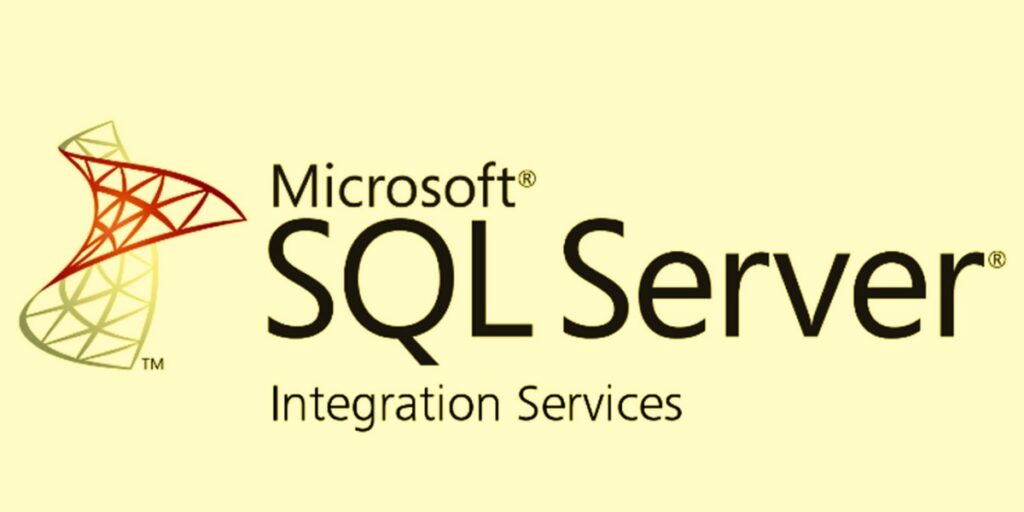The amount of data on the Internet is growing daily, making it a concern for organizations to hold the upcoming data. However, holding or saving the data also requires management and integration. For quite a long time, Microsoft SQL Server Integration Services has been a reliable guard against threats to the ETL processes.
None of the SSIS versions introduced a new approach to scalability, performance, and manageability for data integration tasks. However, SSIS 816, with consistent enhancements and feature updates, has solidified SSIS’s position as a cornerstone for ETL.
This post covers what is SSIS 816, what it does, its benefits with Scale-out, its features, and a practical guide on how to set up SSIS 816 Scale out on a computer.
What is SSIS 816?
SSIS stands for SQL Server Integration Services. 816 is an updated version of SSIS, which is a proven tool for data integration and a valuable asset for businesses looking to streamline data management processes.
SSIS 816 is a powerful ETL tool in the Microsoft SQL Server suite. It facilitates organizations’ automation of the flow and transformation of data between various sources or destinations. This might involve extracting data from different sources, including relational databases, flat files, and others based on web services.
SSIS 816 then transforms the data according to predefined business logic, possibly cleaning, aggregating, or formatting it to meet any requirement. Finally, it loads the transformed data into target destinations such as data warehouses, data lakes, or analytical applications.

SSIS Scale Out in SSIS 816
While earlier SSIS versions offered robust ETL capabilities, SSIS 816 changed everything. It introduced the radical SSIS Scale Out that enabled enterprises to distribute the execution of SSIS packages across multiple servers for parallel execution.
Consider reading through a very intricate data pipeline, which otherwise is going to run on one server, strain its resources, and consume a rather long time for processing.
Well, SSIS 816 Scale Out breaks down this pipeline into smaller tasks and allows you to distribute it across a cluster of servers, where each server deals with its part of the task. Drawing from these results, however, achieves fast execution times for the entire data integration process.
Benefits of SSIS 816 Scale Out
The following are the various advantages to organizations with the SSIS Scale Out in SSIS 816:
Increased Scalability
Because it puts the combined processing horsepower available across multiple servers into service, SSIS 816 handles large datasets elegantly. This directly translates to a cut down in execution time, and you can henceforth deal with huge data volumes for integration.
Improved Performance
Workload distribution across multiple machines relieves bottlenecks on a single server. SSIS 816 reduces the load on an individual server, giving the best overall data integration performance.
Advanced Fault Tolerance
This integration service reduces the risks associated with single points of failure. If one server has a problem, work will be realigned to the servers that are left without truly affecting the data integration process in case hardware malfunctions or software-related problems arise.
Simplified Development and Deployment
Even though the SSIS Scale Out introduced distributed processing, the development experience of SSIS 816 is almost the same. Hence, developers could make good use of their existing SSIS skills in building and deploying packages within the distributed framework.
Exclusive Features of SSIS 816
While SSIS Scale Out is the game-changing feature of SSIS 816, the update offers additional enhancements that elevate the overall data integration experience:

Simplified Cluster Configuration
Setting up a cluster of machines for collaborative work within SSIS 816 is significantly easier than ever before. Enhanced tools and wizards guide you through the configuration process, ensuring a more intuitive and efficient setup for your extensible ETL environment.
Robust Security Enhancements
To guarantee secure distributed execution of SSIS packages, the service 816 incorporates robust security upgrades. These include advanced authentication methods and encryption technology techniques to safeguard sensitive data throughout the entire integration process. This ensures compliance with data security regulations and protects sensitive information.
Improved Development Experience
SSIS 816 caters to developers by offering a more streamlined development experience. Enhancements to the development environment make it easier to build, test, and deploy SSIS packages within the distributed processing framework. This empowers developers to focus on building efficient data pipelines without getting bogged down by complex configuration tasks.
Read Also: MX4SIO Compatibility List
Who Can Benefit Most from SSIS 816?
- Simplified cluster configuration: Setting up a cluster of machines that will work together within SSIS 816 is easier than ever before. Improved tools and wizards walk you through the process of configuration, determining a more intuitive and efficient way to set up your extensible ETL environment.
- Strong security enhancement: To ensure that SSIS packages are executed securely at distributed locations, it has strong security enhancements like enhanced authentication and new-generation encryption techniques to secure the sensitive data from source to destination in the integration process to maintain compliance and to protect sensitive information.
- Improved Developer Experience: SSIS 816 serves the developer by delivering a better developer experience and enhancing the development environment for building, testing, and deploying SSIS packages to support this distributed processing framework. It empowers developers to spend their time building efficient data pipelines rather than getting bogged down in configurations.
SSIS 816: Practical Guide
Here is a roadmap to get you up and running with the first steps:
System Requirements
Make sure that your infrastructure is compatible with SSIS 816. One can find these requirements within the official Microsoft documentation, including hardware specifications, operating system versions, and other software dependencies.
Skillset Development
In case you are not already empowered with the capability to develop using SSIS, you must acquire the same through training resources or certifications by Microsoft or third-party vendors. You should have a good understanding of SSIS concepts and development practices to realize data pipelines in the real sense within the scope of SSIS 816.
Planning and Design
Plan and design your SSIS packages with extreme care, giving due importance to SSIS 816‘s distributed processing-based architecture. Identify the source for the data, define at least one source, one destination, and above all, the transformation logic itself.
Break down a complex ETL process into small, bite-sized manageable chunks that give you the flexibility to distribute them among your cluster of servers.
Cluster Configuration
It has tools that will help in easily configuring your server cluster for distributed processing. Ensure proper connectivity of servers over the network; configure security settings so that there is no problem in safe communication.
Development and Testing
Build and test your data pipelines within the distributed framework. This capability allows SSIS 816 to be built using the familiar SSIS development environment for building and testing packages.
Deployment and Monitoring
Implement your SSIS packages on the configured server cluster; begin execution. It tracks the status of the execution for any package, thus pointing out areas of bottleneck in the execution and successful data integration workflows.
How to Set up SSIS 816 Scale Out on a PC
Step 1- Install SQL Server Features
Select the following items on the “Feature Selection page” in the SQL Server installation wizard.

- Integration Services
- Scale Out Master
- Scale Out Worker
- Database Engine Services
Click “Next” on the “Server Configuration page” to accept the default service accounts and startup types.
Select “Mixed Mode” and click “Add Current User“ on the “Database Engine Configuration page.“

Click Next to accept the default settings for the port and certificates on the Integration “Services Scale Out Configuration > Master Node and Integration Services Scale Out Configuration > Worker Node pages.“
Complete the SQL Server installation wizard.
Step 2- Install SQL Server Management Studio
Download and install SQL Server Management Studio (SSMS).

Step 3- Enable Scale-Out
Open SQL Server Management Studio (SSMS) and connect to your local SQL Server instance. In Object Explorer, right-click on “Integration Services Catalogs” and select “Create Catalog.“
In the Create Catalog dialog, make sure to select the option “Enable this server” as SSIS scale out master.

Step 4- Enable a Scale Out Worker
Right-click “SSISDB” and select “Manage Scale Out” in SSMS. The Integration Services Scale Out Manager app will open.
Switch to “Worker Manager” and select the worker you want to enable to enable a Scale Out Worker.

Step 5- Run packages in Scale Out
After completing the above steps, you can run SSIS packages in Scale Out.
Note: This setup applies to SQL Server and SSIS Integration Runtime in Azure Data Factory.
Considerations for SSIS 816
- Package Partitioning: If the data pipeline is too complex, then your SSIS packages shall recommend partitioning. It essentially refers to breaking down the package into smaller units of logic that can individually be run against differential servers within the cluster. This could further enhance performance and scalability.
- Error Handling and Logging: Any data integration solution must be based on robust error handling and logging. Advanced features in SSIS 816 help in defining error-handling strategies and taking complete logs of the execution of packages. This will hence be very helpful in detecting and debugging any problems that might possibly creep up during data processing.
- Security Best Practices: While it has excellent security features, it is quite important to apply the best practices of security in distributed data integration. Apply robust authentication methods, restrict access to critical sources and destinations, and review periodically, from time to time, system activity for any suspicious behavior.
Read Also: What is IPSaya? All You Need to Know
The Closing Note
Data integration efficiency is no longer a luxury and has become a need for every organization. SSIS 816 is one such version, which, through its revolutionary SSIS Scale Out feature and a suite of other enhancements, will empower organizations to manage and integrate “Big Data.”
Its basic essence lies in distributing workload execution across multiple servers, which ensures drastically improved performance, enhanced scalability, and increased fault tolerance.
SSIS 816 is a strong and reliable solution for smoothing out data integration workflows for large enterprise customers dealing with huge datasets or for any data-driven organization seeking to derive insights faster from their information.

